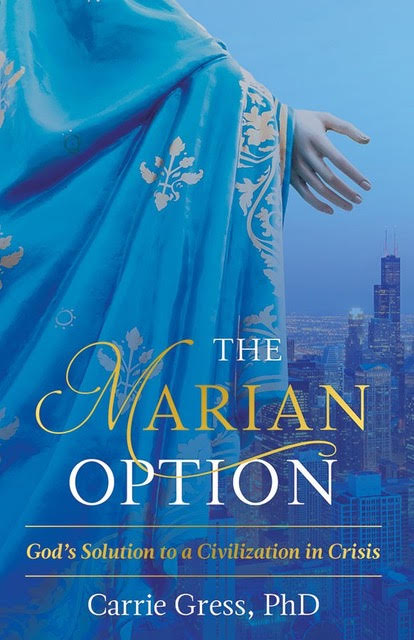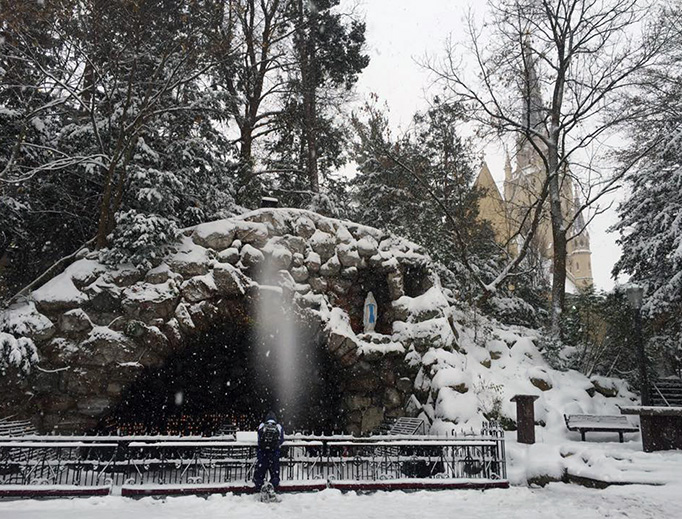Here is the Key to Living the Marian Option
Saint after saint has witnessed to the fact that Our Lady was at the center of their success for sanctity.

How can Christians best deal with post-Christian America?
Rod Dreher’s The Benedict Option is a book-long answer to that question. Dreher’s take is that St. Benedict offers a model that Christians can adopt to preserve their faith and culture in a world vastly hostile to it.

Among the many reviews of Dreher’s work, Maggie Gallagher’s insightful article “What Christians Can Learn (and What They Can’t) from Rod Dreher’s Benedict Option” particularly struck me. Gallagher lays out an eye-popping look at how Catholics are well behind Evangelicals and Mormons in terms of political outreach and passing the faith down to the next generation. She suggests that Catholics need to look at the “best practices” for engaging in politics and evangelization. “The stakes,” she says starkly, “are too high for hunches.”
This idea of best practices was behind my own thoughts last spring when I started looking at the BenOp. The best practices approach to Christianity, evangelization, and civilizational transformation seemed to be embodied in the person and life of Pope Saint John Paul II. This was a man who lived most of his life under Christian persecution – first with the Nazis, and then with the Soviets. Not only did he function through daily life under such pressure, but he lived his Catholic faith in such a way that it burst forth and transformed the lives and hearts of millions.
While I know Gallagher was referring to a more nuts-and-bolts type of practices, there is a strong case to be made for the fact that The Marian Option — allowing Mary and her Son to be at the center of our lives — is the best practice for every struggle we currently face. And in fact, after two thousand years of Christian history, there is overwhelming evidence that The Marian Option works exceedingly well — and not just for Polish popes.
John Paul is hardly the first (and hopefully not the last) saint to have been formed by the Mother of God. Saint after saint has witnessed to the fact that Our Lady was at the center of their success for sanctity, while correcting the cultural rot around them. Think, for example, of St. Dominic, who vanquished the Albigensians; St. Juan Diego, who bore the good news and the roses of Our Lady of Guadalupe in Mexico; St. Catherine Labouré; who passed along the Miraculous Medal; and St. Maximillian Kolbe, who was called “clairvoyant” by Pope Paul VI for his Mariological research. These are just a few individuals that helped change the direction of history through their devotion to Our Lady.
While researching The Marian Option and looking at huge swathes of history, I discovered that Mary has played a significant role in massive geopolitical change touching upon every issue we currently face, from communism, Islam, paganism, atheism, heresy, and on and on. And Mary’s response to each is not a blanket approach, but suited to the specific individuals and conflicts found in every age.
Marian devotion isn’t just for a few holy individuals, but has a wide, wide net. I just reconnected with an old friend from graduate school, Robert Kloska, who sent me a link to his blog where he describes how much Our Lady has interceded in his own life:
I’ve had an ongoing relationship with the Blessed Mother for a very long time. Were it not for her, I think I would have abandoned Christ a long time ago. She comforted me as a young man when I was in the midst of extreme emotional pain and utter despair. Then for a while as I was struggling to develop a mature faith, she kept intervening to bring me back to her Son, Jesus. Every time, she always seemed to say, “Do whatever He tells you!”
Kloska's story is hardly unique. Again and again, Christians attest to her powerful intercession across the millennia. There is also powerful evidence to suggest that when we abandon Mary, our faith isn’t far to follow. As Archbishop Fulton Sheen said, “…for Catholics who have honored the Mother, still worship the Son, while Protestants, who now have ceased to confess the Son, began then by scoffing at the Mother.”

(Kloska is also the photographer who captured this photo – estimated to have been viewed by a million people worldwide — on a snowy day at the Grotto at Notre Dame University. See his blog for more fascinating details.)
Mary is not absent in our world, and like a good mother she is aware of our every need, concern, and struggle, even before we are. The simple key to living the Marian Option is to ask for her assistance, particularly through the Rosary. Blessed Alan de Roche reported that Jesus said to him, “If only these poor wretched sinners would say my Rosary they would share in the merits of my Passion and I would be their advocate and appease my Father’s justice.” Yes, if only we would say his Rosary, Jesus and his mother could work through our lives in powerful and astonishing ways — ways that go well beyond any sort of “best practices” we could come with on our own.












